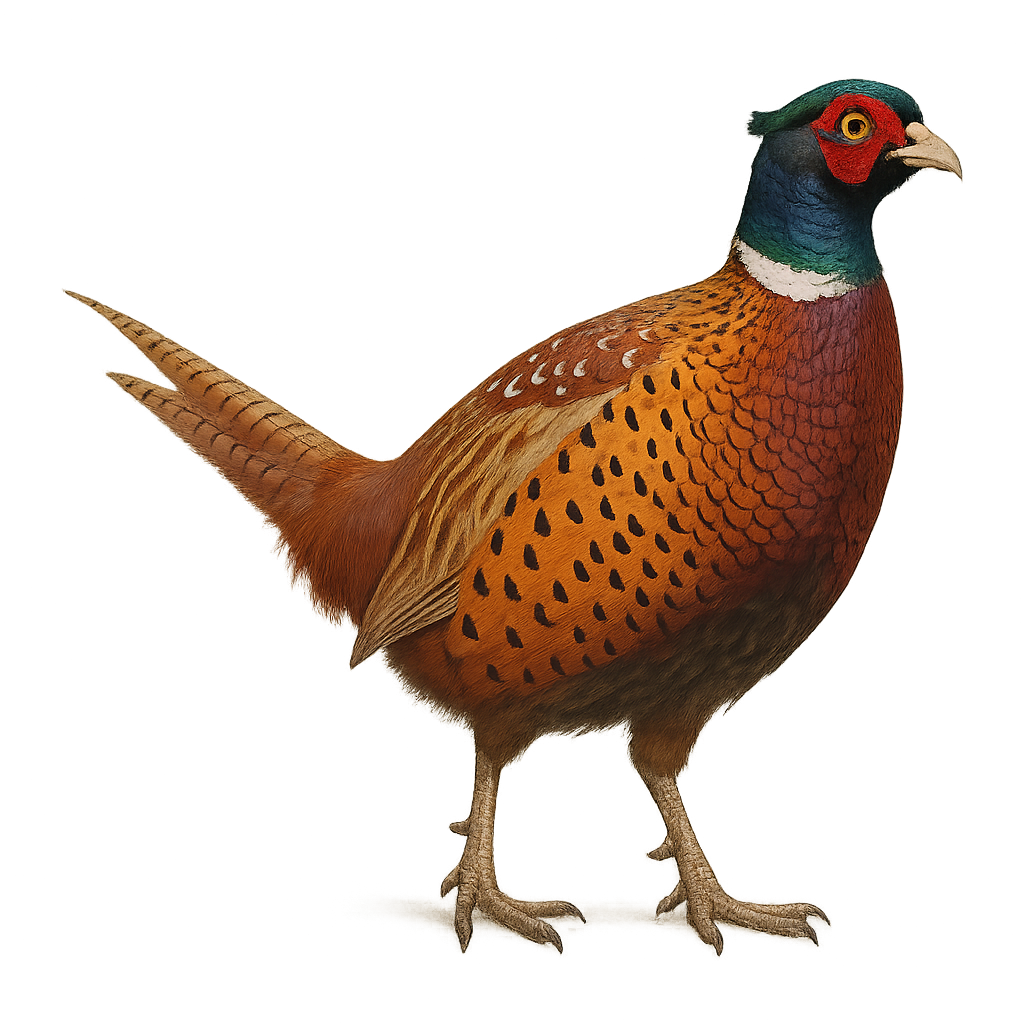Your wildlife photography guide.
Explore the colchis pheasant in detail, study its behavior, prepare your shots.
Where to observe and photograph the colchis pheasant in the wild
Learn where and when to spot the colchis pheasant in the wild, how to identify the species based on distinctive features, and what natural environments it inhabits. The WildlifePhotographer app offers tailored photography tips that reflect the colchis pheasant’s behavior, helping you capture better wildlife images. Explore the full species profile for key information including description, habitat, active periods, and approach techniques.
Colchis pheasant
Scientific name: Phasianus colchicus

IUCN Status: Least Concern
Family: PHASIANIDAE
Group: Birds
Sensitivity to human approach: Suspicious
Minimum approach distance: 30 m
Courtship display: March to May
Incubation: 23-28 jours
Hatchings: April to June
Habitat:
Forests and woodlands
Activity period :
Primarily active during the day, with peak activity in the morning and late afternoon.
Identification and description:
The Common Pheasant, or Colchian Pheasant, is a medium to large-sized bird, easily recognizable by its bright colors and silky plumage. The adult male is particularly spectacular, with shiny plumage in shades of green, red, gold, and blue, and a long tail adorned with fine feathers. It measures about 70 cm in length, most of which is its tail, and weighs between 0.8 and 1.5 kg. The female, more discreet, has brown spotted plumage that helps her blend into her surroundings. Native to Asia Minor and the Caucasus region, the Colchian Pheasant has been introduced to many parts of the world for hunting and decoration. It typically inhabits wooded areas, cultivated fields, and grasslands. Its diet is omnivorous, consisting of seeds, berries, insects, and sometimes small vertebrates. The species is mainly active at dawn and dusk. While the Common Pheasant is not threatened, it faces risks such as habitat loss, excessive hunting, and predation by carnivores.
Recommended lens:
300 mm – adjust based on distance, desired framing (portrait or habitat), and approach conditions.
Photography tips:
Use a telephoto lens to photograph from a distance, respecting the discreet and sometimes elusive nature of the species.
Photograph early in the morning or late in the afternoon, when soft light highlights the metallic sheen of the male’s colorful plumage and the more subtle tones of the female.
Look for it in agricultural areas, meadows, forest edges, or hedgerows, where it feeds on seeds, berries, insects, and small invertebrates.
Be patient and discreet. Pheasants are often alert and tend to hide in tall grass or dense vegetation.
The Common Pheasant (Ring-necked Pheasant) is classified as Least Concern by the IUCN. Although it is widespread and often reared or introduced for hunting, it is still important to preserve its natural habitats to maintain healthy wild populations.
The WildlifePhotographer App is coming soon!
Be the first to explore the best nature spots, track rutting seasons, log your observations, and observe more wildlife.
Already 1 430 wildlife lovers subscribed worldwide

